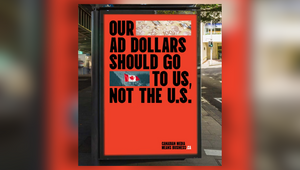
Why No Is A Perfectly Good Answer

When it comes to agency growth, the natural assumption would be more is better. More at-bats, more wins, more revenue, more business gains, more agency health, more overall success. More ‘yes’ yields more ‘better’.
Then again, maybe not.
It’s counterintuitive, but I’ve learned my role as head of growth is not growing as much as possible as fast as possible; it’s knowing when to say yes and when to say no so we have the right kind of growth. It can be agonising at times, especially since growth is in my job description, but I’ve had to redefine what good growth is.
Some no's are easy. A client may bring you an opportunity that is not really an opportunity. An unfair review process. An inadequate budget or fee. An impossible timeline. A lack of understanding or respect for good work. Those are easy to say no to; I can do that all day long and feel good about it.
Some yeses are easy. A great client, a great opportunity, a great budget, a great process. I can say yes to those all day long and feel good about it. (More of those, please.)
But then there’s that messy middle. That’s where decisions get tough. A desired brand or category with an insufficient budget. An assignment that’s not really in your sweet spot but the client is great. Lack of internal alignment (as a new business leader, you need your team to be all-in). A beautiful brief but you don’t have the internal capacity to handle it properly. Or the opposite problem, when the pipeline isn’t as full as you’d like and there’s worry about the future.
There’s a grey area to new business decisions; sometimes the right answer is the much harder one to choose.
As an agency, we have a filter we apply to every new business opportunity to help guide us through those tougher calls. We affectionately call it, ‘The Gauntlet’. Here’s a sampling of the questions we ask ourselves before we proceed:
Are they a modern brand with an eye on the future?
Can we do what we do best?
Are they marketing-forward? Willing to take risks creatively and stand behind them?
Are they good, trusting people?
Are they funded?
Can we do good work? And can we make a profit while doing it?
Is the process for selecting an agency partner fair?
Do we have capacity?
The trick is being able to say yes to all of The Gauntlet’s questions, not just some. While there’s subjectivity to it, as well as some gut that has to be applied, if you’re consistent about it, it’s always worth it in the long run.
While I learned saying no is necessary to get the right kind of growth, how did I learn to actually say it? That was the harder part. What if I burn a bridge? What if I say no to a search consultant and they don’t come back to us anytime soon? What if it feels bad? What if it makes someone else feel bad?
I learned by doing. I learned if it wasn’t right to say yes, I had to do it and did it. The more practice I got, the better I got at it, the more convicted I became. I learned that saying no is a perfectly good answer. Sometimes the best answer. I learned to trust The Gauntlet. I learned a no made room for another opportunity, one that may be a yes. And that means better opportunities for our agency. And that leads to more great work. I learned saying no can be good for the business, good for our people, and good for our industry. And, funny enough, I think it’s been good for me.
If you’re in business development, you know every opportunity that comes your way is an opportunity to learn. (It may be exactly what keeps me doing what I do.) So, over the years, I’ve accumulated quite the running list of learnings, and in addition to the trusty Gauntlet, I keep these in mind when faced with a tough decision on how best to respond:
- Great work begets more great work. Find opportunities to do that, and more opportunities will find you.
- It doesn’t hurt to ask. Clients are often open to changing their process, timeline, or budget if you just ask and they understand the rationale. If not, it may be a red flag.
- Watch out for those red flags. If they exist in the new business review, they’ll be in the relationship.
- Projects are a great way to test out the relationship from both perspectives. (But they should always be paid.)
- Life’s too short to work with jerks.
- Shortchange the process or change your standards of working, and the work will suffer. (See first learning.)
- There will be heartbreaks. There will be joy. And the joy makes it all worth it.
- People will walk away. The right people will come back.
We’ve had to say no to plenty of work, no to plenty of clients and brands we liked, no to plenty of revenue and growth. It's not easy. After all, there are numbers and goals to hit, livelihoods to support, brands that make you want to bend the rules. Not everyone will agree internally, sometimes it just plain feels bad to say no to people you like, and for crying out loud, your job is to grow. But we’ve found we have to do exactly what we tell our clients to do: be consistent. We can’t change our standards when times get tougher or when a really attractive brand comes along. Sticking to our principals is hard. It means we’ll say no more than we say yes. But it makes the ‘yeses’ that much sweeter.
---















